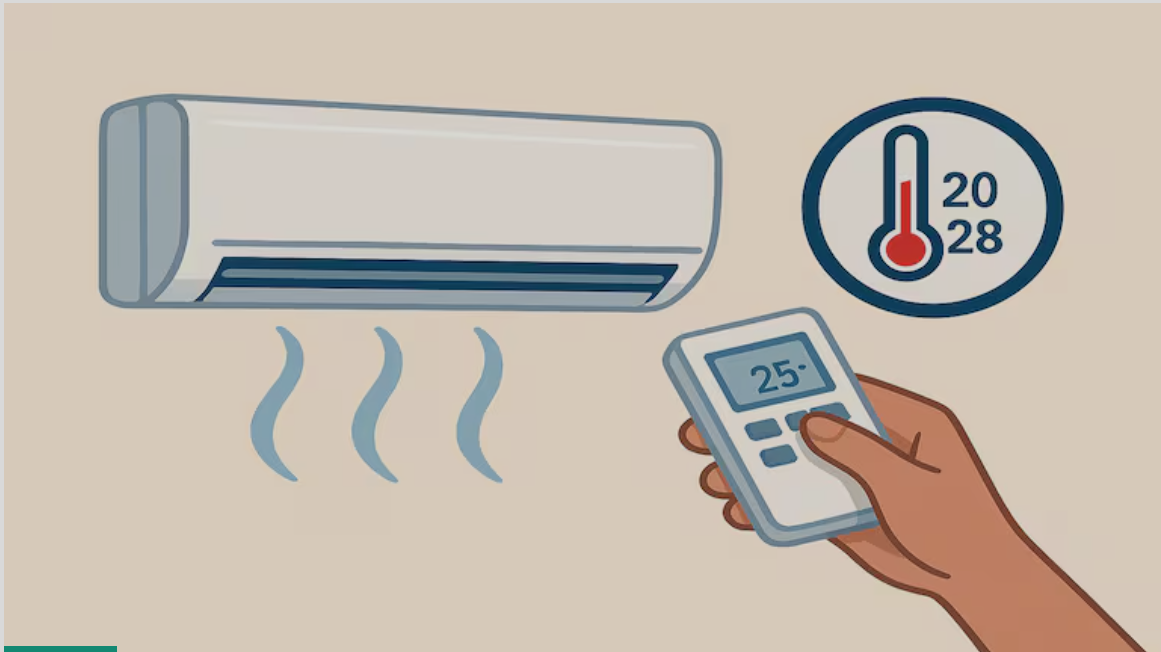
India is set to introduce a landmark rule in 2025 that will standardize air conditioner (AC) temperature settings nationwide. This move is designed to address the country’s surging power demand, promote energy efficiency, and help fight climate change. Here’s a comprehensive look at what the new rule is, why it’s being implemented, how it will affect you, and how it compares to global practices.
What Is the New AC Temperature Rule?
-
Temperature Range: All new ACs sold and installed in India—whether for homes, offices, malls, hotels, shops, or vehicles—must operate within a set temperature range: minimum 20°C and maximum 28°C.
-
No Cooling Below 20°C: You will not be able to set your AC below 20°C, even during extreme heat.
-
No Heating Above 28°C: For ACs with heating functions, you cannot set the temperature above 28°C
Why Is This Rule Being Introduced?
1. Managing Surging Power Demand
-
Peak Demand Crisis: India’s peak power demand hit a record 241 GW in June 2025 and is expected to rise further, largely due to increased AC usage during heatwaves.
-
ACs’ Share: Air conditioners account for about 50 gigawatts—nearly 20%—of the country’s maximum power load.
2. Saving Electricity and Money
-
Energy Savings: Raising the AC temperature by just 1°C can save about 6% in energy use.
-
Massive Impact: If even 30% of new AC buyers (~5 million people) adopt this change, it could save 1.4 billion units of electricity annually—enough to power 10–14 million homes for a month.
-
Lower Bills: Reduced energy use means lower electricity bills for consumers.
3. Reducing Pressure on the Power Grid
-
Grid Stability: Standardizing AC temperatures helps prevent blackouts and eases the burden on the national power grid during peak summer months.
4. Fighting Climate Change
-
Lower Emissions: Most of India’s power comes from coal. Cutting AC energy use will reduce greenhouse gas emissions and help India meet its climate goals.
5. Promoting Responsible Cooling
-
Behavioral Change: The government wants to encourage more sustainable and efficient cooling habits, moving away from the trend of setting ACs to extremely low temperatures.
-
How Will the Rule Be Implemented?
- Applies to All Sectors: The rule covers all new ACs—residential, commercial (malls, hotels, offices, theaters), and vehicles.
-
Manufacturer Compliance: AC makers will update software or reprogram units so they cannot be set below 20°C or above 28°C. This is a minor technical change and will not increase AC prices.
-
Rollout Timeline: The Bureau of Energy Efficiency (BEE) is finalizing the framework. Implementation is expected within a few months, after consultations with manufacturers and state governments.
-
Existing ACs: The rule will apply to new ACs sold after the regulation takes effect. Existing ACs in homes and offices are not immediately affected.
How Will It Affect You?
-
No More Ultra-Low Settings: You will no longer be able to set your AC below 20°C. This may require an adjustment if you are used to cooler settings like 16°C or 18°C.
-
No Price Increase: The change is a software update and will not make ACs more expensive.
-
Healthier Comfort: Experts note that 24–26°C is actually the ideal range for comfort and health. Setting ACs too low can cause discomfort or health issues.
-
Lower Bills: Expect to see savings on your electricity bill due to reduced energy consumption.
-
Environmental Benefits: Your reduced energy use will contribute to national efforts to lower emissions and fight climate change.
Public Reaction and Concerns
- Mixed Responses: Some citizens welcome the move for its environmental and economic benefits, while others see it as government overreach, especially in the context of rising temperatures and heatwaves.
- Global Context: Similar rules exist in countries like Italy, Spain, Greece, and Japan, mostly for public buildings. India’s rule is unique in its nationwide, cross-sector scope
Comparison with Other Countries
Country Minimum AC Setting Scope Enforcement Type India 20°C (from 2025) All new ACs, all sectors Mandatory Italy 27°C (public bldgs.) Public buildings Legal, with fines Spain 27°C (public bldgs.) Public buildings Legal, with fines Greece 27°C (public bldgs.) Public buildings Legal, with fines Japan 28°C (offices) Offices, public spaces Recommended, not legal Key Takeaways
-
All new ACs in India will have a temperature range of 20°C to 28°C.
-
You cannot set your AC below 20°C or above 28°C (for heating).
-
Rule applies to homes, offices, malls, hotels, shops, and vehicles.
-
No price increase for new ACs is expected.
-
The move is aimed at saving energy, reducing bills, easing pressure on the power grid, and fighting climate change.
-
Implementation will begin within months, after final guidelines are issued.
In summary:
The new AC temperature rule is a major step towards energy efficiency and climate action in India. While it may require some adjustment in personal comfort, the benefits in terms of lower bills, a more stable power grid, and a greener future are significant -